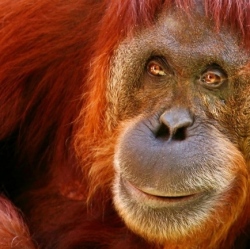
It has been suspected that most mammals started down the evolutionary fast-track after the majority of dinosaurs went extinct. However, new fossil finds from 66 million years ago suggest that primates may have started evolving earlier, with one primate boasting a particularly large body size during a time of exceptionally tiny mammals.
Past fossil finds have revealed at least three different species of Purgatorius – the earlier known primate – which likely belonged to animals that were no larger than a well-fed squirrel. However, 66 million years ago, the squirrels of New York City would have dwarfed most mammals, who survived by scavenging and hiding in a time of giants.
Now new fossils, unearthed by Craig Scott of the Royal Tyrrell Museum in Alberta, Canada, reveal a primate with teeth twice the size and width of those boasted by Purgatorius. Based on jaw and tooth fragments alone, Scott suspects that this new primate, called Ursolestes perpetior, was between four and 10 times the size of Purgatorius, making it an uncharacteristically massive mammal for its time.
Amazingly, a lot can be learned about the primate from its teeth and jaw fossils alone. As described in a study recently published in the journal Paleontology, U. perpetior was more suited for an omnivorous diet, munching on fruits and insects, compared to its smaller primate cousins that likely just supplemented a leafy diet with the occasional bug. A higher protein diet could explain its boosted size, and represents an important stepping stone for the evolution of primates.
